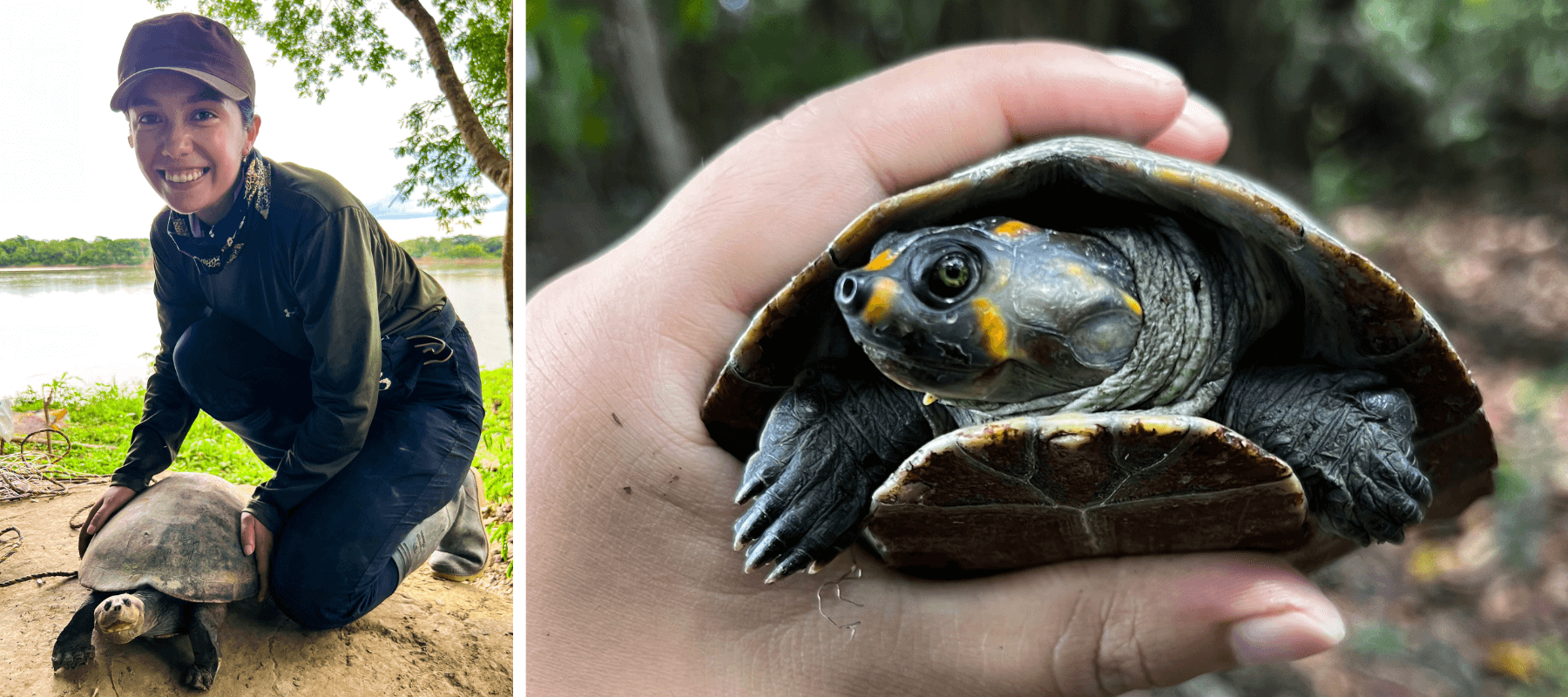
Nestled in the verdant embrace of the Amazon Rainforest, Colombia’s El Jaguar Nature Reserve stands as a sanctuary for a plethora of wildlife, including the endangered Yellow Spotted River Turtle (Podocnemis unifilis). Facing severe threats like poaching, egg harvesting, and habitat loss, these freshwater turtles are vital to the ecological balance of the Amazon River Basin. At the forefront of this battle is Herpetologist Viviana Pinilla Ortigoza, whose groundbreaking research and community engagement efforts are making a significant impact.
Viviana’s work is part of an ambitious project spearheaded by Women for Conservation, aiming to safeguard this keystone species through habitat analysis, population trend studies, and robust community engagement. The overarching goal is not only to protect these turtles but also to foster a new generation of women scientists, promoting gender equality in science and enhancing conservation plans for Colombia’s biodiversity.
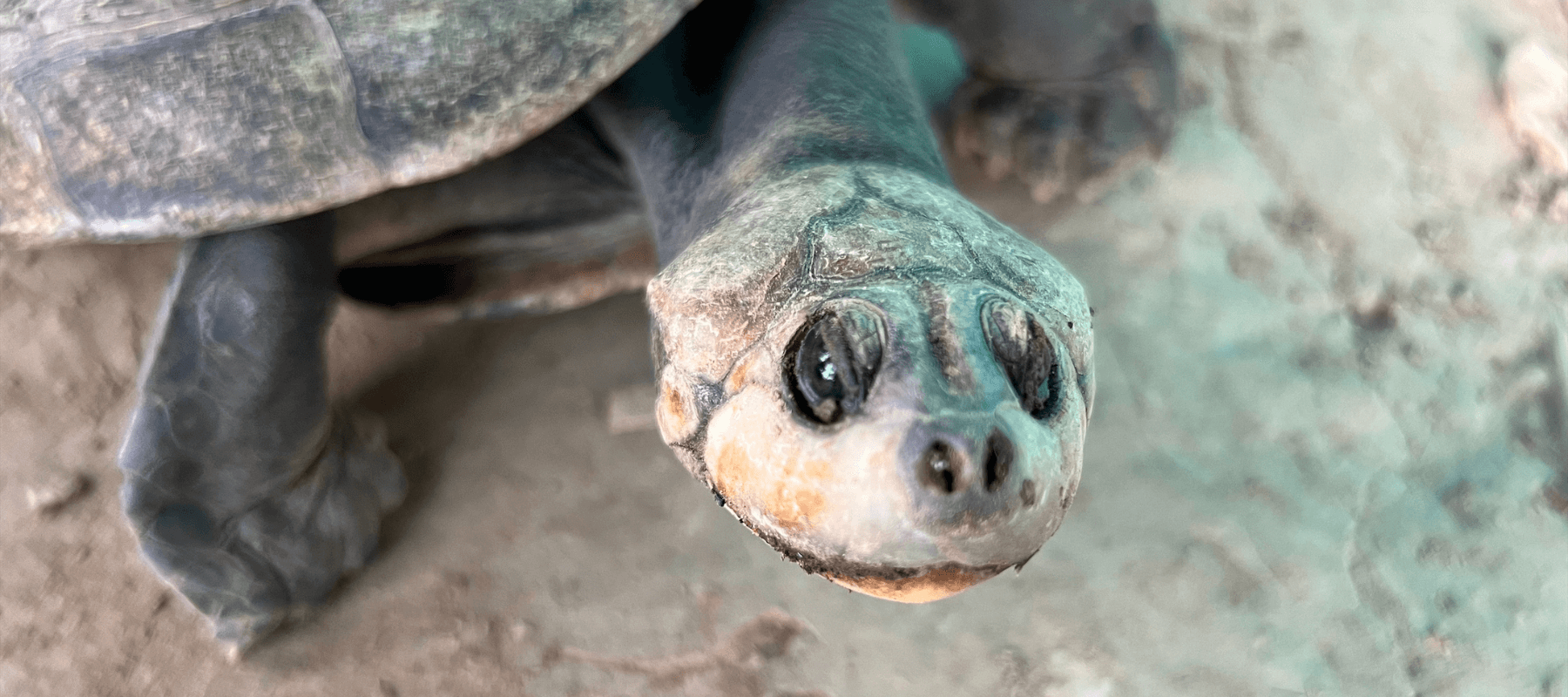
The Yellow Spotted River Turtle: An Ecological Keystone in Peril
The Yellow Spotted River Turtle is more than a species in peril; it is a linchpin for the health of the Amazon ecosystem. These turtles essential for maintaining the health of the Amazon’s rivers, playing crucial roles in nutrient cycling, seed dispersal, and water quality. Viviana’s eyes light up as she explains, “The survival of the Yellow Spotted River Turtle is intertwined with the well-being of the entire Amazon ecosystem. When we lose them, we lose more than a species—we lose a vital piece of the Amazon’s intricate puzzle.”
As both predators and prey, they consume large amounts of dead material, transforming organic matter into animal protein, which is essential for nutrient cycling. Through their droppings, they disperse seeds, spores, and plant fertilizers across ecosystems, promoting plant diversity and growth. Additionally, as scavengers, they help maintain water quality by consuming fish carrion and diseased or weakened fish, thus supporting the health of fish populations.
Poaching and illegal egg harvesting have decimated their numbers, while deforestation and pollution have eroded their habitats. Recognizing the urgency, Viviana has teamed up with Women for Conservation to launch a comprehensive project to reverse this decline.
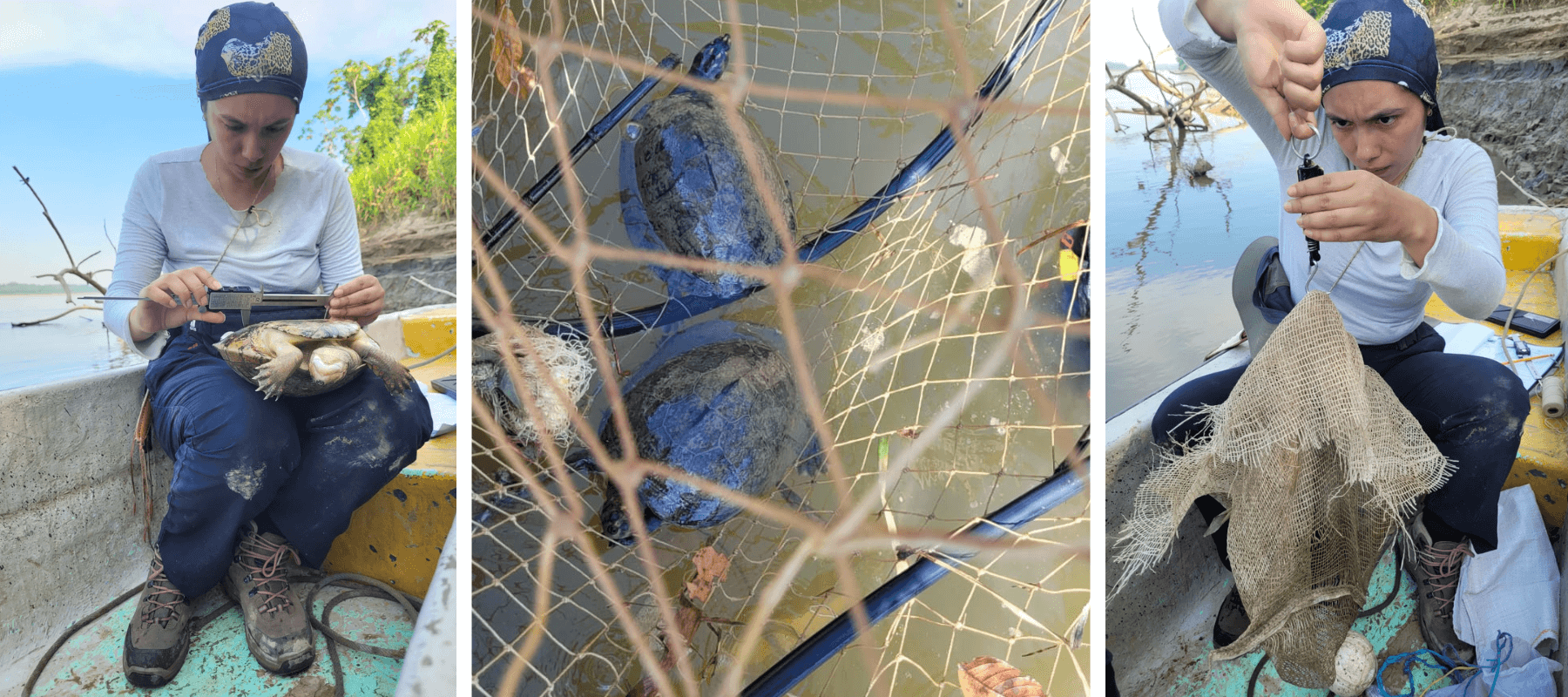
A Day in the Field
Viviana’s days in the field are filled with meticulous observation and data collection. “I start early in the morning, preparing my field bag for trap checks, turtle capture, and observation. We check the traps three times a day—morning, afternoon, and night—placing them in strategic locations based on previous sightings or potential habitats. If we capture any turtles, we measure, weigh, mark, and photograph them before releasing them back into their habitat.”
In between trap checks, Viviana and her team conduct sightings on foot or by boat, noting the time and location of each turtle they observe. “Most sightings happen around midday when the turtles are basking,” she adds. These rigorous routines offer Viviana invaluable lessons. “I’ve learned everything from tying a good knot for the canoe to staying calm during the jungle’s harsh weather. Understanding the river’s dynamics, learning from the local ranger about the forest’s wildlife, and above all, learning from the turtles themselves—they’ve been my teachers on this journey.”
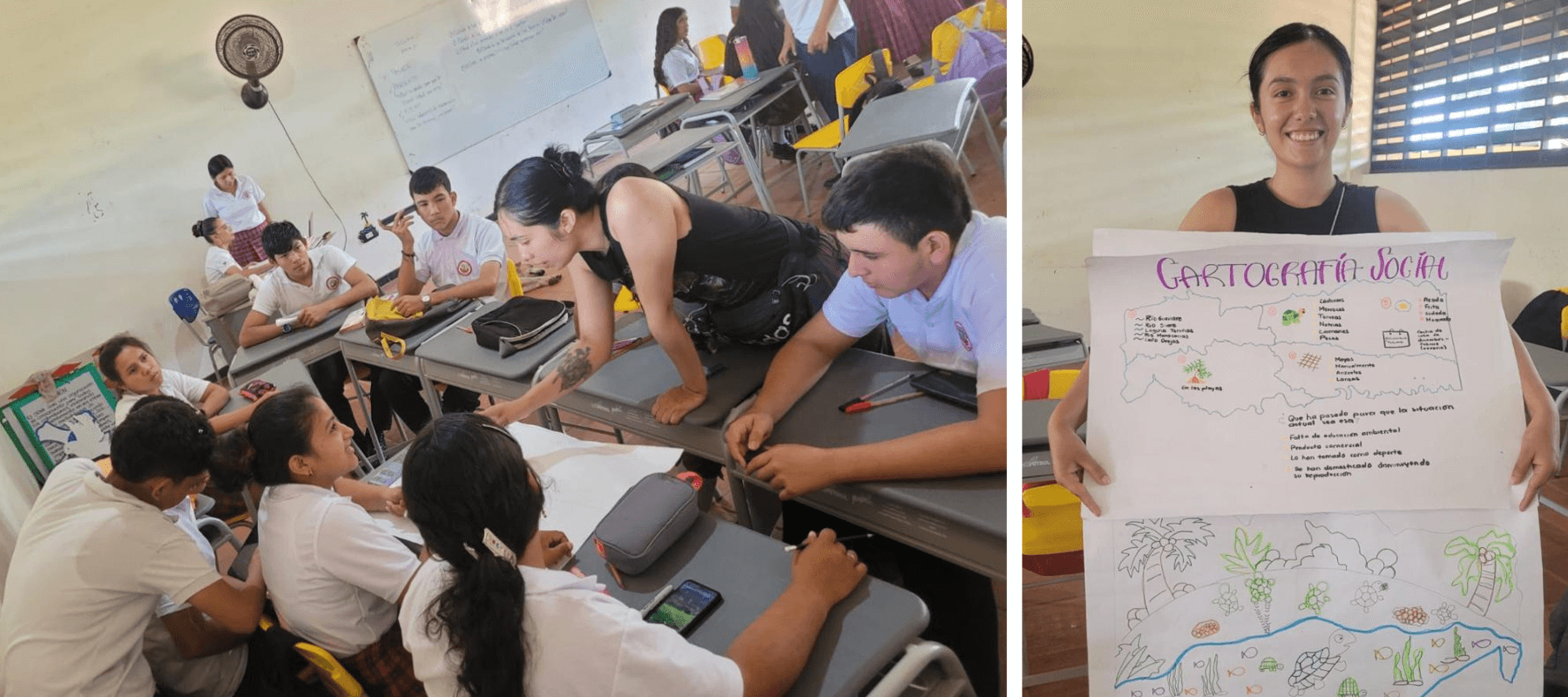
Community-Centered Conservation
One of the most rewarding aspects of Viviana’s work is her connection with the local community in Mapiripán. “Mapiripán is a post-conflict area, a town rebuilt from the ruins of war, relying heavily on fishing and palm cultivation. Fishing includes wild animals like turtles, which are vital for both economy and nutrition. Overexploitation of turtle populations here is enormous. That’s why continuous support for this type of research, alongside strong community and environmental education work, is essential.”
Viviana’s research is more than scientific; it’s a bridge to the community. “The community is absolutely everything in conservation processes. Without them, we can’t achieve favorable results for species and ecosystems. My contribution, though humble, involved initiating conversations with local fishermen and residents about the project’s importance and the long-term implications of indiscriminate hunting. Working with school children was also invaluable; they are the future leaders who will drive change in how we interact with nature.”
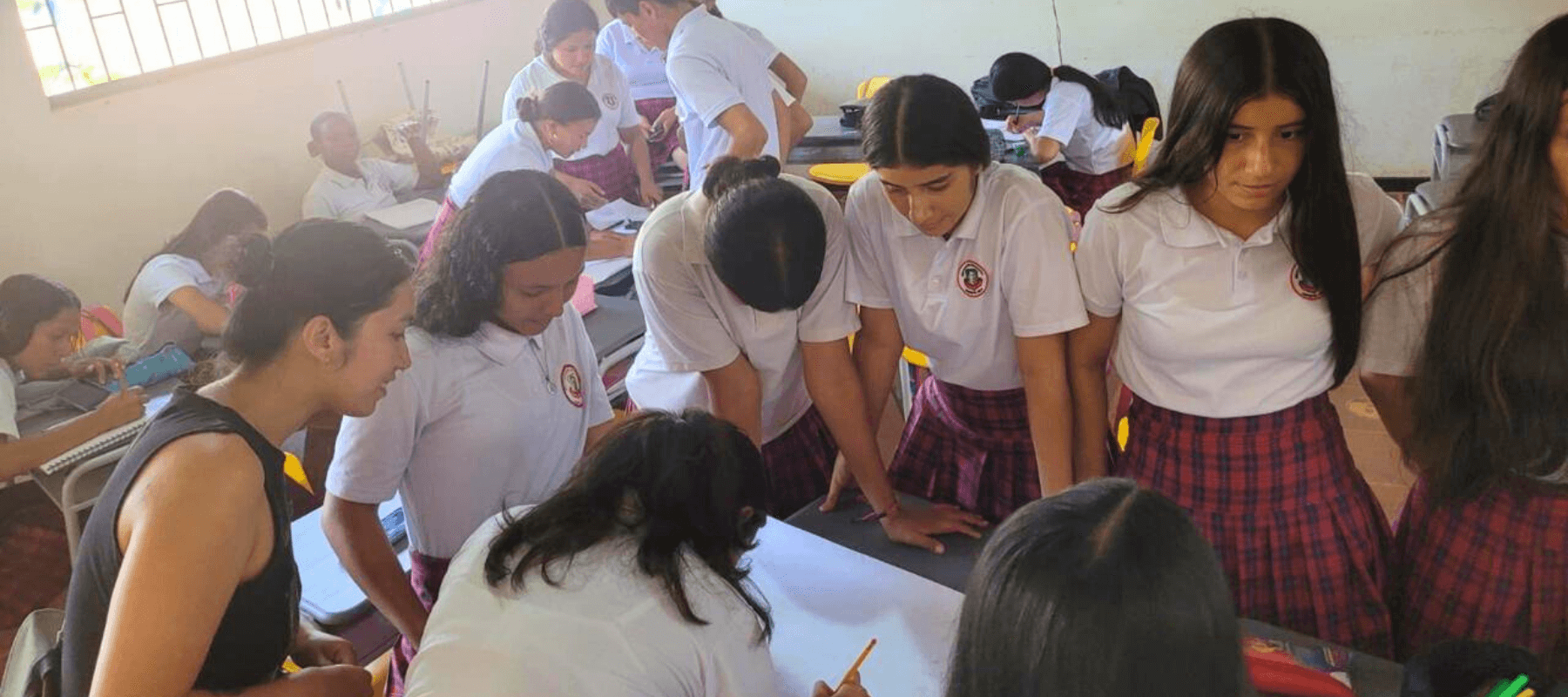
W4C’s Women Scientist Scholarship Program
A pivotal component of this project is our Women Scientific Scholarship Program, which aims to empower women in the field of environmental research. Through this program, aspiring female scientists receive the resources and training they need to pursue their passions and contribute to conservation efforts.
Viviana herself is a testament to the impact of this program. “Doing science in Colombia is tough, and for women, these challenges are multiplied. We face not only the terrain’s difficulties and funding struggles but also gender stereotypes and patriarchal scrutiny. This is why support for women researchers is crucial. These scholarships help close gaps and highlight the incredible work of brilliant women passionate about understanding and conserving our country’s biodiversity.”
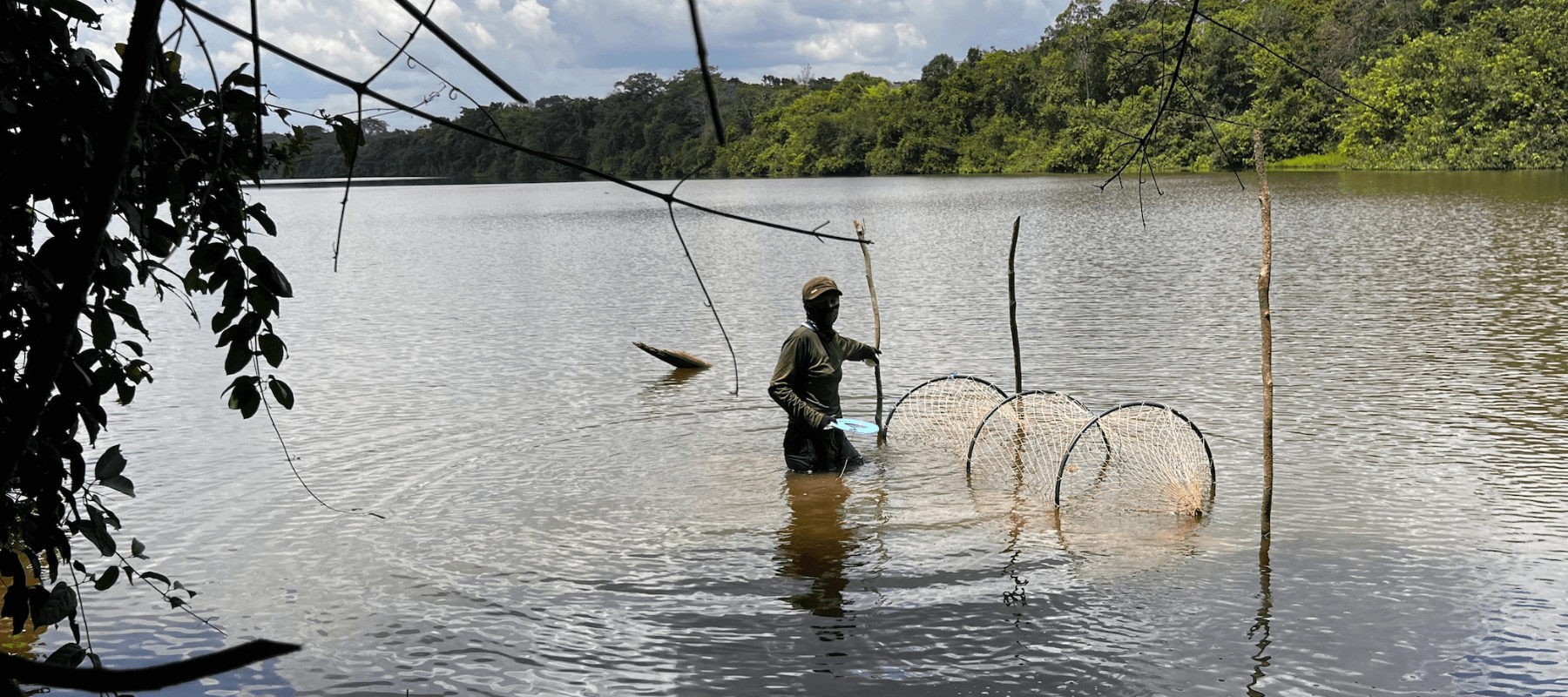
The Road Ahead
The fruits of Viviana’s labor are already visible. Increased community involvement and the support of local school children have led to a notable reduction in poaching and habitat degradation around the El Jaguar Nature Reserve.
However, Viviana knows the work is far from over. “Building effective bonds with the community is fundamental for conservation”, she stresses. We must move away from prohibition and instead listen to and address community issues, allowing us to understand their dynamics better. Without this approach, nothing is achieved, and these processes take time and must be consistent.””
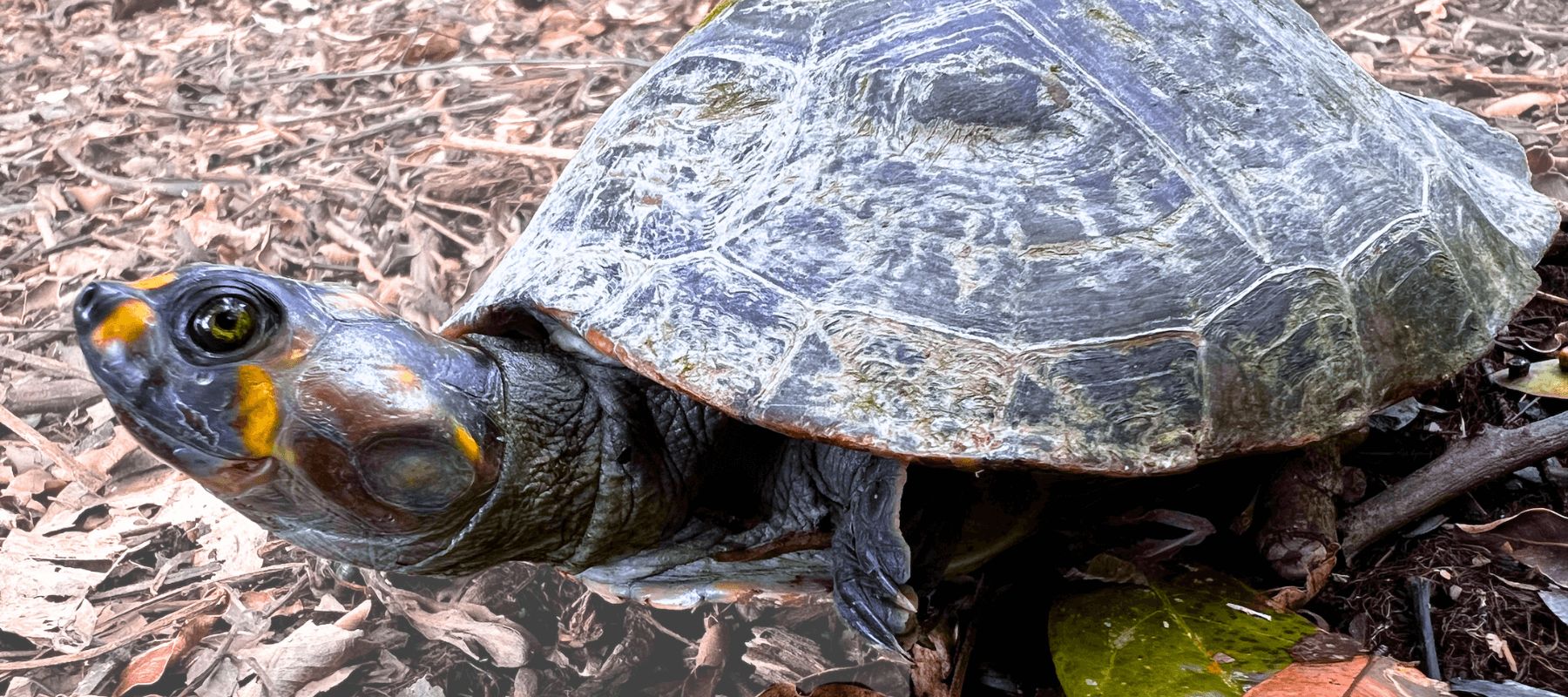
A Call to Action
For those eager to make a difference, supporting initiatives like W4C’s Women in Science Scholarship Program is a crucial step. Together, we can ensure the survival of the Yellow Spotted River Turtle and the vibrant ecosystem it supports, paving the way for a brighter future for Colombia’s invaluable biodiversity.
As Viviana reflects on her journey, she leaves us with a powerful message: “Our work is far from over, but the progress we’ve made is a testament to what can be achieved when we come together for a common cause. Each small contribution is a grain of sand on the vast beaches of the Guaviare River, but together, these grains can create a lasting impact.”
Join us in this vital mission. Together, we can turn the tide for the Yellow Spotted River Turtle and the Amazon Rainforest it calls home.

